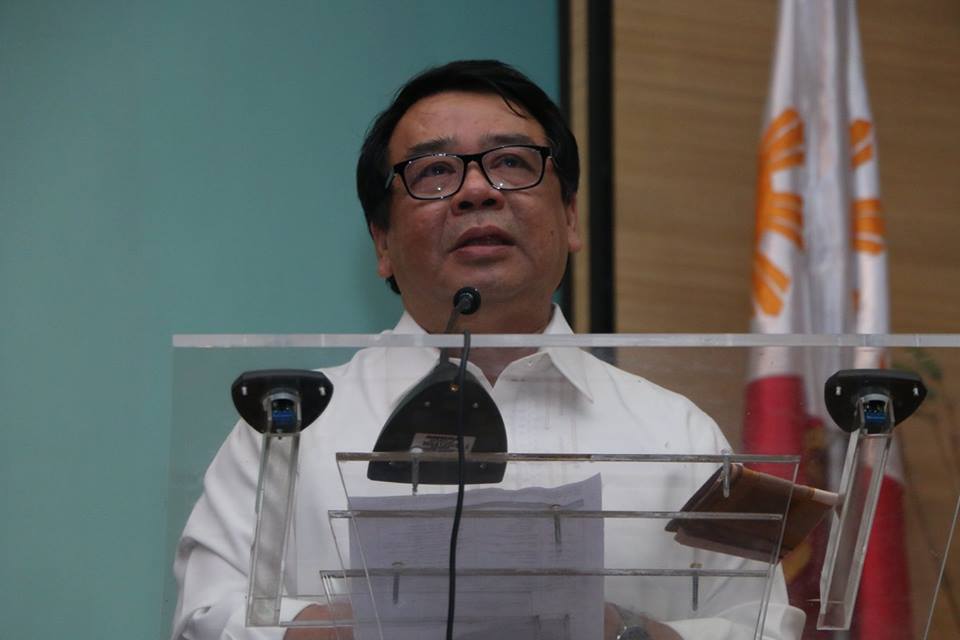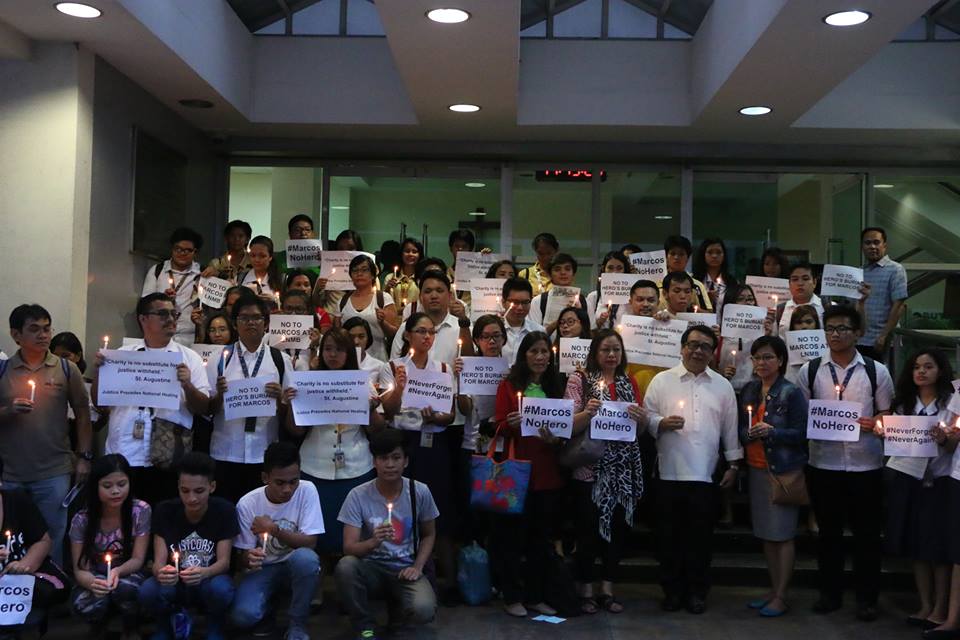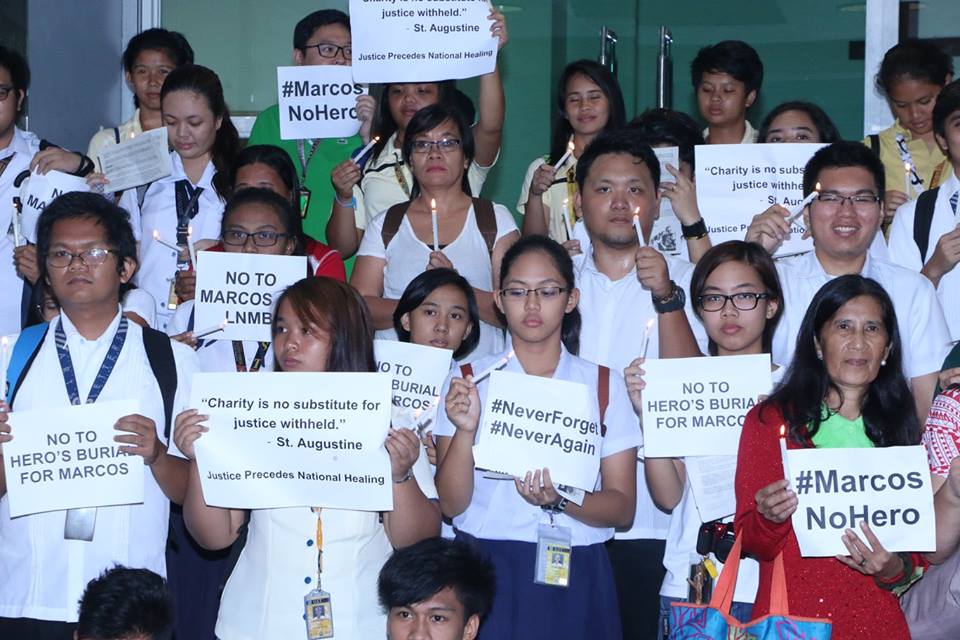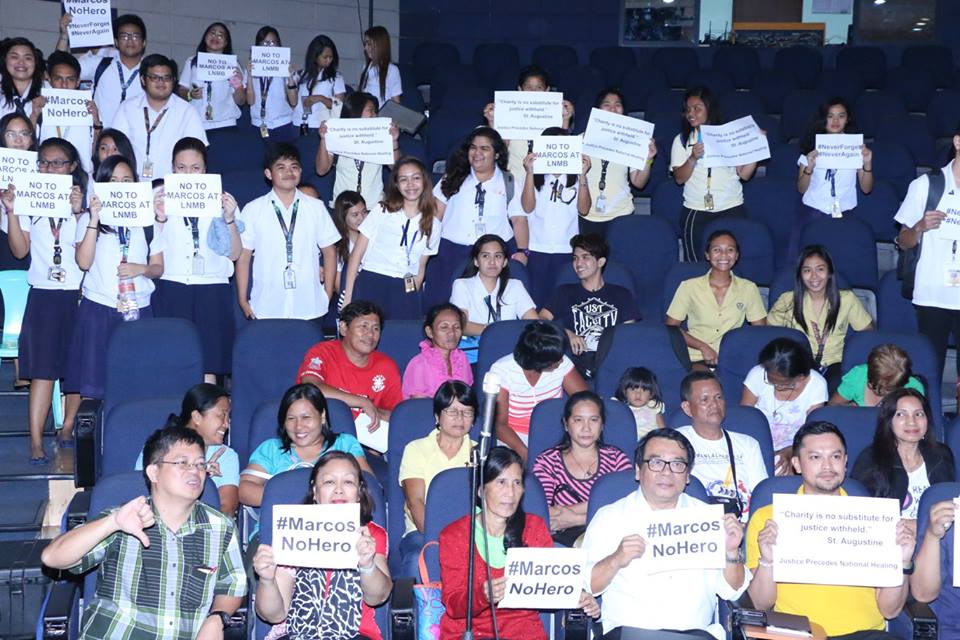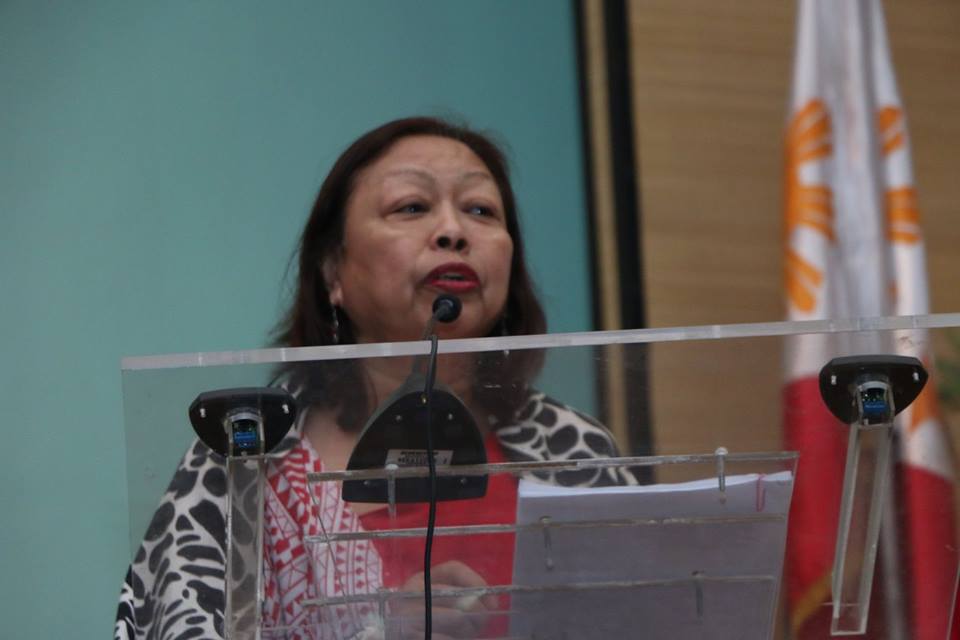UST Simbahayan Community Development Office, along with the Office for Student Affairs, Central Student Council, and Junior High School held “Honor Thy President?: Martial Law Commemoration and Marcos Hero’s Burial” Advocacy forum and exhibit last Sept.19, 2016.
Recalling their experiences during Martial Law, the speakers for this event were Atty. Neri Colmenares, President of National Union of People’s Lawyers (NUPL) and one of the petitioners against Ferdinand Marcos’ interment at Libingan ng mga Bayani, and was also a prisoner during Martial Law; Zenadia Mique, from Philippine Alliance of Human Rights Advocates (PAHRA) and also a former prisoner; and Professor Augusto de Viana, Chair of UST Department of History.
On opposing Marcos’s burial in the Libingan ng Mga Bayani, Colmenares raised three points: it was against the public policy, against the law, and against the Philippine Constitution and its philosophy. In terms of public policy, according to Colmenares, the Supreme Court, the Congress, and the Executive branch declared Marcos as a dictator, corrupt, and a human rights violator. “Marcos and Martial Law are not the golden era that many of his supporters would like us to believe,” he said. Questioning the Solicitor General’s claim that it was in the law that permits Marcos’ interment to LNMB, Colmenares said there was none that they can cite; however, the administration were citing an AFP Directive—which was not an Executive Order nor an Administrative Order.
“We are citing a law—Republic Act 289—that says there should be a pantheon for the President of the Republic of the Philippines worthy of emulation and a source of inspiration for generations of Filipinos and generations yet unborn,” Colmenares said. In a similar vein, De Viana said that “Marcos’ burial is a disservice to the people,” after giving a brief overview of who was Marcos: from the Julio Nalundasan Case up until the 1986 People Power Revolution toppled his dictatorship. Atrocities Under RA 1081 Being at different places during the Martial Law, Colmenares and Mique both affirmed that atrocities were committed by the military.
Mique said the military mostly targeted those who were a part of the uprising “We were arrested in a public place. No witnesses and I know they can salvage us, or they can bring us to a safe house without anybody knowing and torture us,” she said. Mique also recalled that many women were raped in prisons. “They decide who lives and who dies as if they were gods at that particular time,” Colmenares said, “Martial Law is one of the darkest and the most horrible and bloodiest chapters in Philippine History.”
Vice-Rector for Religious Affairs Rev. Fr. Filemon Dela Cruz, OP said some of the youths wanted to live in a time they thought was good since they embraced the stories from adults, especially the idea of discipline and, thus, tantamount to living with a sense of “false nostalgia”. Fr. Dela Cruz said that History must be taught and learned in bigger picture and not through tidbits of extracted information which present only one side of the story. After the forum, a symbolic action was held in front of the Tan Yan Kee Building: candles were lit in commemoration of the victims during the Martial Law.



